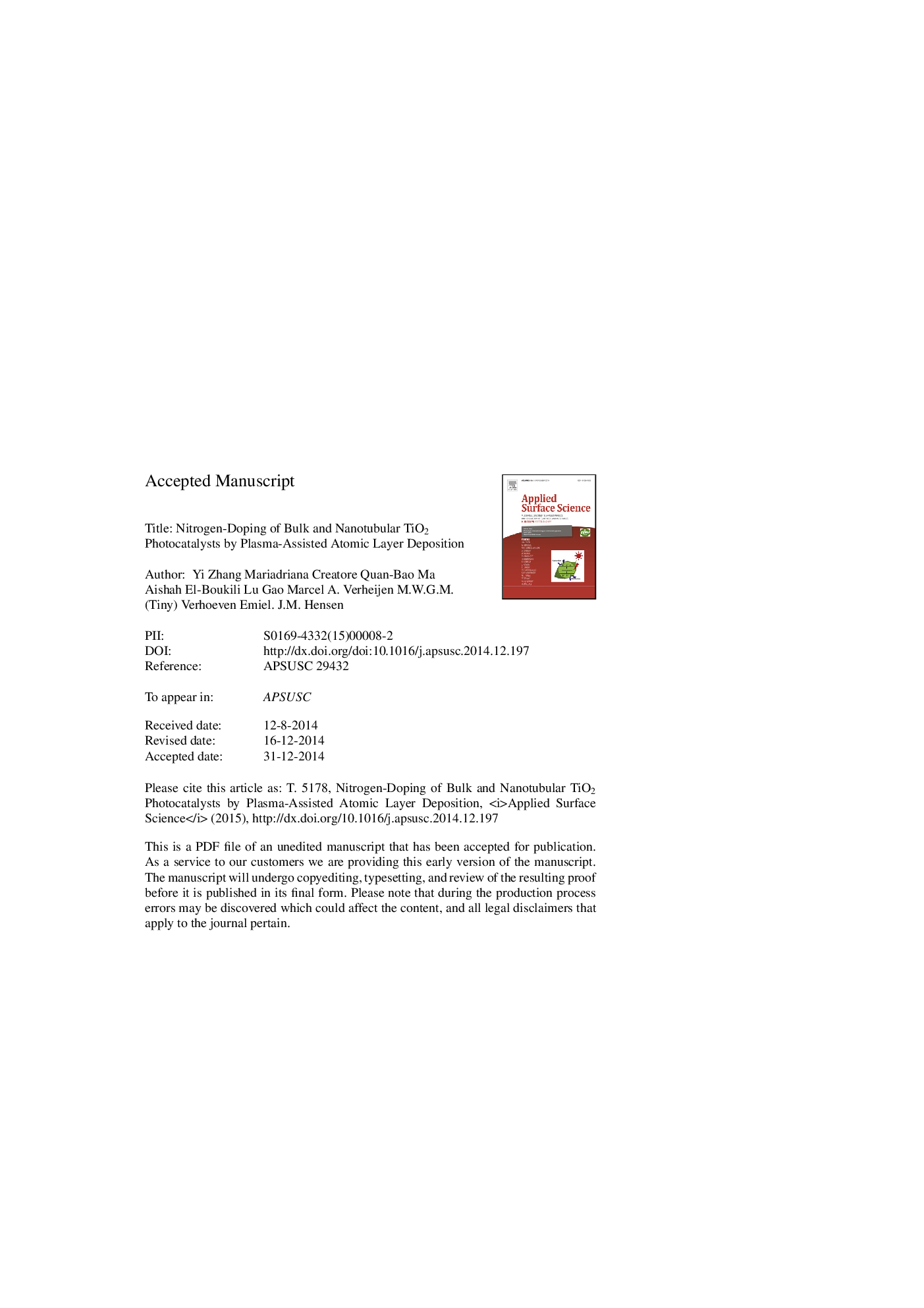| Article ID | Journal | Published Year | Pages | File Type |
|---|---|---|---|---|
| 5348734 | Applied Surface Science | 2015 | 50 Pages |
Abstract
Plasma-assisted atomic layer deposition (PA-ALD) was adopted to deposit TiO2-xNx ultrathin layers on Si wafers, calcined Ti foils and nanotubular TiO2 arrays. A range of N content and chemical bond configurations were obtained by varying the background gas (O2 or N2) during the Ti precursor exposure, while the N2/H2-fed inductively coupled plasma exposure time was varied between 2 and 20Â s. On calcined Ti foils, a positive effect from N doping on photocurrent density was observed when O2 was the background gas with a short plasma exposure time (5 and 10Â s). This correlates with the presence of interstitial N states in the TiO2 with a binding energy of 400Â eV (Ninterst) as measured by X-ray photoelectron spectroscopy. A longer plasma time or the use of N2 as background gas results in formation of N state with a binding energy of 396Â eV (Nsubst) and very low photocurrents. These Nsubst are linked to the presence of Ti3+, which act as detrimental recombination center for photo-generated electron-hole pairs. On contrary, PA-ALD treated nanotubular TiO2 arrays show no variation of photocurrent density (with respect to the pristine nanotubes) upon different plasma exposure times and when the O2 recipe was adopted. This is attributed to constant N content in the PA-ALD TiO2-xNx, regardless of the adopted recipe.
Related Topics
Physical Sciences and Engineering
Chemistry
Physical and Theoretical Chemistry
Authors
Yi Zhang, Mariadriana Creatore, Quan-Bao Ma, Aishah El Boukili, Lu Gao, Marcel A. Verheijen, M.W.G.M. (Tiny) Verhoeven, Emiel. J.M. Hensen,
